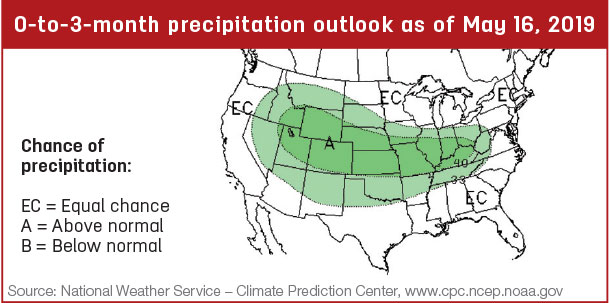The first P supplementation work in the U.S. was done on the King Ranch in south Texas from January 1938 to March 1941. Supplementation of 6.4 grams of phosphorus six days a week resulted in increased cow weight, calf weaning weight and reproduction. Increased rates of phosphorus supplementation were not beneficial. A second experiment was conducted from July 1941 to November 1946.
In this study, phosphorus treatments provided in self feeders, in the drinking water or as phosphorus fertilizer also resulted in increased cow weight, calf weaning weight and reproduction. It is important to note the phosphorus fertilizer was the most cost-effective treatment and also allowed for a 50% increase in stocking rates. In both studies, cattle grazed native range with no protein or energy supplementation.
Researchers in New Mexico reported no response to free-choice phosphorus supplementation on percent calf crop during a five-year study. During one drought year, delayed estrus was observed in cows that didn’t receive any phosphorus supplementation. Cows grazed native range, and no protein or energy supplements were fed.
 Additionally, phosphorus supplementation was evaluated in heifers and cows grazing native range in North Dakota. Phosphorus supplementation had no effect on reproduction in these studies, but calf weaning weight and heifer weight gain were increased in some of the studies.
Additionally, phosphorus supplementation was evaluated in heifers and cows grazing native range in North Dakota. Phosphorus supplementation had no effect on reproduction in these studies, but calf weaning weight and heifer weight gain were increased in some of the studies.
Research at Utah State was done with Hereford females maintained in a drylot. No differences in phosphorus treatments were observed until a group of cows were fed a very low-phosphorus diet. After six months, lower bodyweight, reduced feed consumption and reluctance to move were reported for this group. Impaired reproduction was not observed until after the cows had been on this diet for over a year.
These studies indicate phosphorus supplementation only impacts reproduction when a severe phosphorus deficiency results in reduced bodyweight and body condition. Feeding extra phosphorus above requirements is not going to improve reproduction or weaning weights and will only lead to increased cost. Next month’s article will discuss desired mineral phosphorus levels and how they are impacted by geographic location, protein and energy supplementation, and plant phosphorus content. ![]()

-
Jason Banta
- Associate Professor and Extension Beef Cattle Specialist
- Texas A&M University
- Email Jason Banta







